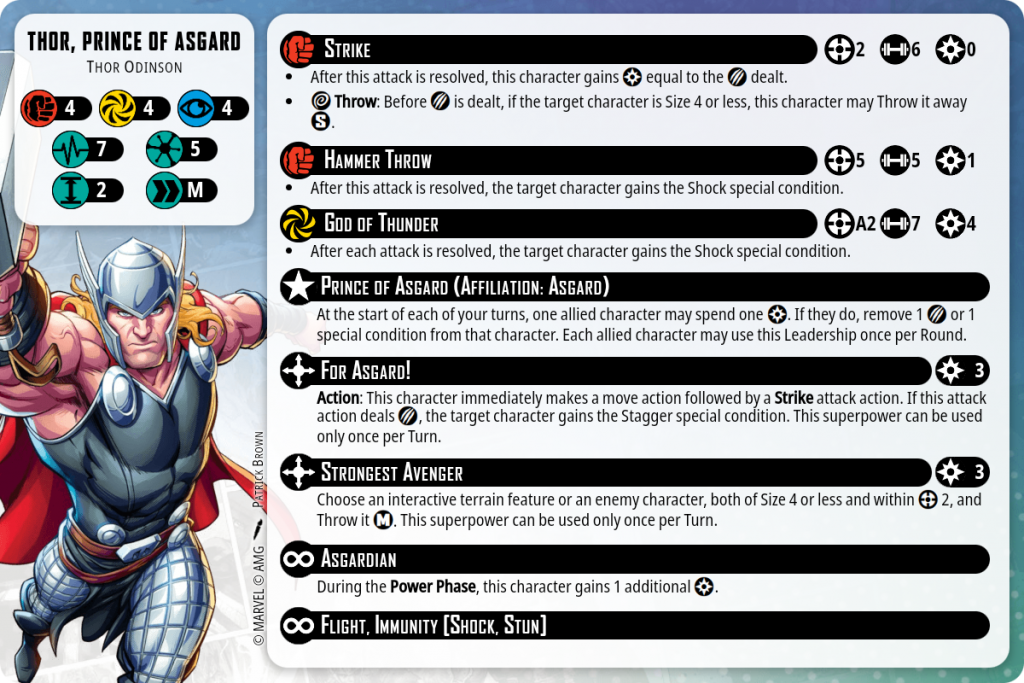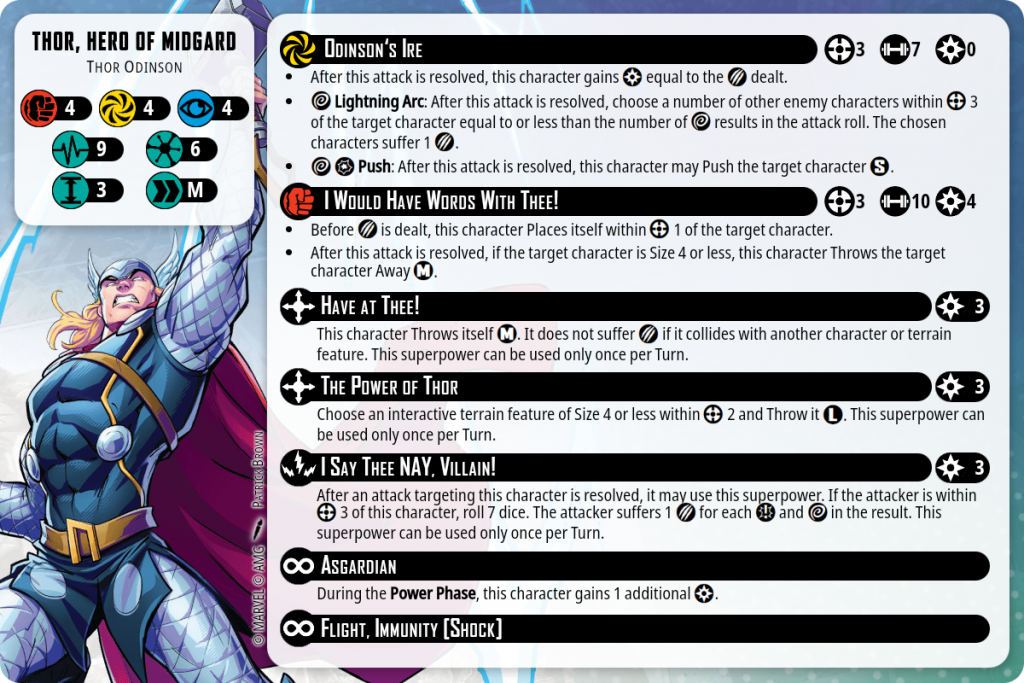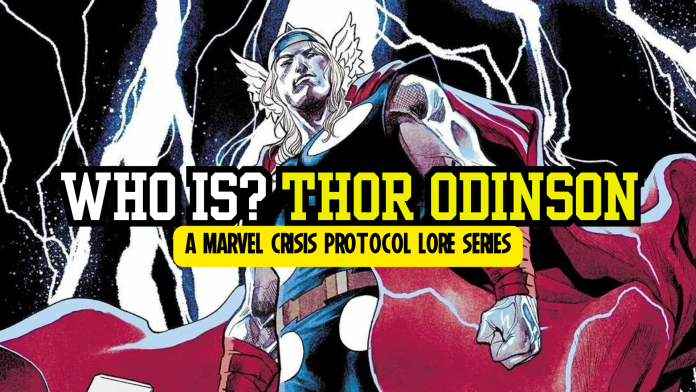Have at thee, reader! A staple of Marvel comics, the God of Thunder has been around since 1962, and is a founding member of the Avengers. In this edition of Who Is, we will dive deep into his background and try to answer the question of who is Thor Odinson?
Background
The Marvel version of Thor was heavily influenced by Norse Mythology, and was created by Stan Lee, Jack Kirby, and Larry Lieber. He made his debut in Journey Into Mystery #83 in 1962. This version of Thor was created because Stan Lee believed that the only way you could make a superhero that was more powerful than the Hulk or the Fantastic Four was to create a superhero that was a god. In mythology, Thor is depicted as the god of thunder, storms, lighting, strength, and the protection of humankind. He is also known for wielding his hammer Mjolnir.
In Marvel comics, Thor was introduced as the alter ego of Donald Blake, who had acquired Thor’s power, which is not exactly true. Thor’s father, Odin, believed Thor was too arrogant and banished him to modern-day Earth. He wiped his memory of being an Asgardian and named him Donald Blake. During a visit to Scandinavia, Blake discovered a walking stick that could transform into Mjolnir and give him the power of Thor. In an attempt to defeat Thor, Loki provoked Hulk to attack the train Blake is traveling on. However, Thor defeated Hulk and then Loki with the help of Iron Man, Ant-Man, and Wasp. This group of superheroes decided to join together to form the Avengers after their battle against Loki. After being restored as an Asgardian, Thor was defeated by Beta Ray Bill (more on him later), and Odin gave Bill the ability to transform into Thor.
No longer a god, Thor took on the name of Sigurd Jarlson and lived among humans as a construction worker. When Odin seemingly died after the attack by Onslaught, Thor assumed the role of King of Asgard. In his hubris, he decided to relocate Asgard above Earth and attempted to cure all of the shortcomings of humanity by taking their liberty from them. This does not end well. Both Asgard and New York City were destroyed as a result of the military conflict that arose, and Thor found himself no longer worthy enough to lift Mjolnir. During Ragnarok, Thor bound himself again to Donald Blake and established a New Asgard that is floating above Oklahoma. Thor saved New Asgard when it comes under attack from the forces of Norman Osborne. Then, teaming up with a younger and an older version of himself, Thor faced and defeated Gorr the God Butcher. This battle, though successful, left Thor’s confidence shaken and he was once again unable to lift Mjolnir. Jane Foster was able to lift Mjolnir, however, and temporarily became the new Thor before restoring his confidence and returning that role to him. Thor then went on to defeat Malekith the Accursed during the War of the Realms, and even killed Galactus after being given the Power Cosmic.
Publication History/MCU History
As I previously stated, Thor was originally created by Stan Lee, Jack Kirby, and Larry Lieber in 1962. His first comics appearance was in Journey Into Mystery #83, and he has been a Marvel regular ever since. Several Thor movies have been pitched to movie studios, but until the Marvel Cinematic Universe, Thor only appeared in 1988’s The Incredible Hulk Returns and was portrayed by Eric Allan Kramer. In the Marvel Cinematic Universe, Thor has been famously portrayed by Chris Hemsworth, and has appeared in nine films in the series.
Recommended Runs
-Thor: God of Thunder #1-11 (Jason Aaron, Esad Ribic, and Dean White): I’m putting this at the top of the list because if you don’t read another Thor comic, the Jason Aaron run is the one that you need to read. This specific series pits three versions of Thor (past, present, and future) against Gorr the God-Butcher. Love and Thunder did Gorr wrong.
-Journey Into Mystery #83 (Lee, Kirby, Lieber): It’s Thor’s first appearance, so I have to recommend it.
-Thor Vol. 3 #1-6 (J. Michael Straczynski, Oliver Coipel): Before the first Marvel Civil War, Thor was taken off the board, because a god would really make things unfair. Bringing Thor back and having to redefine him in a post-civil war era would be a difficult task for anyone. However, Straczynski (of Babylon-5 fame) was more than up to the task. Check it out.
-Thor #340-353 (Walt Simonson): For my last recommendation, I am throwing out one of the best storylines written by the consummate Thor author. The Surtur Saga lasted for over a year, and the fact that you still care about how it ends after that long of a journey really speaks to the skill of the writer.
Does the Model Miss the Mark?
Thor is one of the few alter-egos in Marvel: Crisis Protocol that has multiple versions of the character to choose from. Thor Odinson is represented by Thor, Prince of Asgard and Thor, Hero of Midgard. Let’s look at each of these individually.
Thor, Prince of Asgard

One thing that both versions of Thor have in common is their high Threat Value. The “base” version of Thor comes in at 5 threat, which when you pair him with other affiliated Asgard models, you’re Asgard squads are not going to have very many models in them. His 0 Power Cost Strike and Hammer Throw are strong attacks and do a good job of representing Thor hitting opponents with his hammer. His spender attack, God of Thunder, is the iconic thunderstrike attack of Thor from the comics and movies, and from personal experience, it can be really effective. Additionally, Thor has a charge (For Asgard!) as well as a Size 4 terrain/character throw (The Strongest Avenger). One of Thor’s defining characteristics is his desire to be the first to meet his enemies on the battlefield, and having a charge to allow him to move and attack represents this well. Additionally, because he is a god, he should be able to throw the biggest pieces of terrain and characters. This version of Thor is also representative of Thor as a true ruler of Asgard, as he has a leadership ability (and until CP91 he was the only affiliated leader).
Thor, Hero of Midgard

For one more threat, what are you getting and who is this version of Thor meant to represent? Let’s start with the second question. This version is meant to represent an older version of Thor who has grown more powerful through saving Earth multiple times. This is Thor at the apex of his power level. In game terms, that means that this Thor should perform on the level of a Hulk. On paper, it looks like he just might do that. His 0 power cost attack Odinson’s Ire has a very respectable range of 3, and he throws 7 dice during the attack. He will likely get damage through, and will probably be able to fuel his 4-cost, 10-dice I Would Have Words With Thee! (side note: I love the naming conventions for this character) regularly. Like his 5-threat version, he has a size 4 throw with The Power of Thor (though it is only terrain and not a character throw). He also doesn’t have a charge, but instead throws himself with his superpower Have at Thee! Unlike his 5-threat version, this version has a counter-attack with I Say Thee, NAY, Villain! This version of Thor is built to deal as much damage as possible with every activation, which I believe is an accurate representation of a Thor at the peak of his power.
Have any questions or feedback? Drop us a note in the comments below or email us at contact@goonhammer.com. Want articles like this linked in your inbox every Monday morning? Sign up for our newsletter. And don’t forget that you can support us on Patreon for backer rewards like early video content, Administratum access, an ad-free experience on our website and more.


